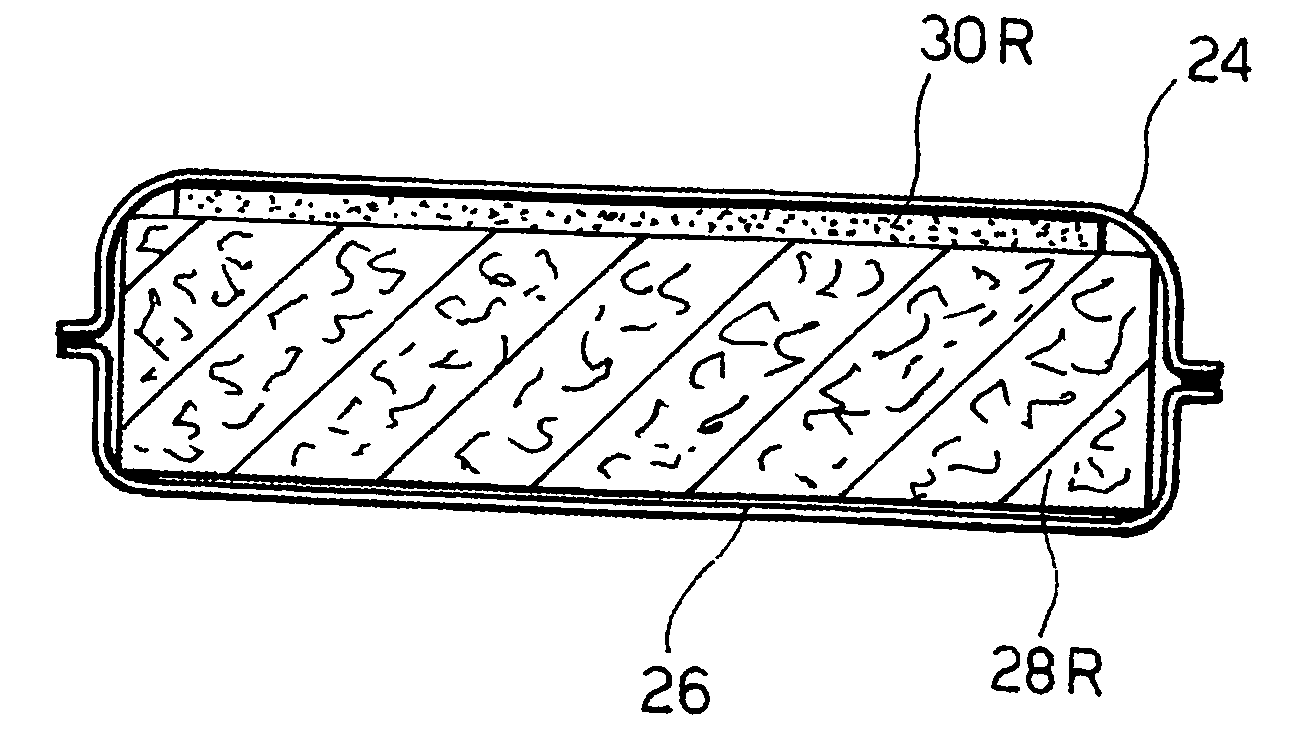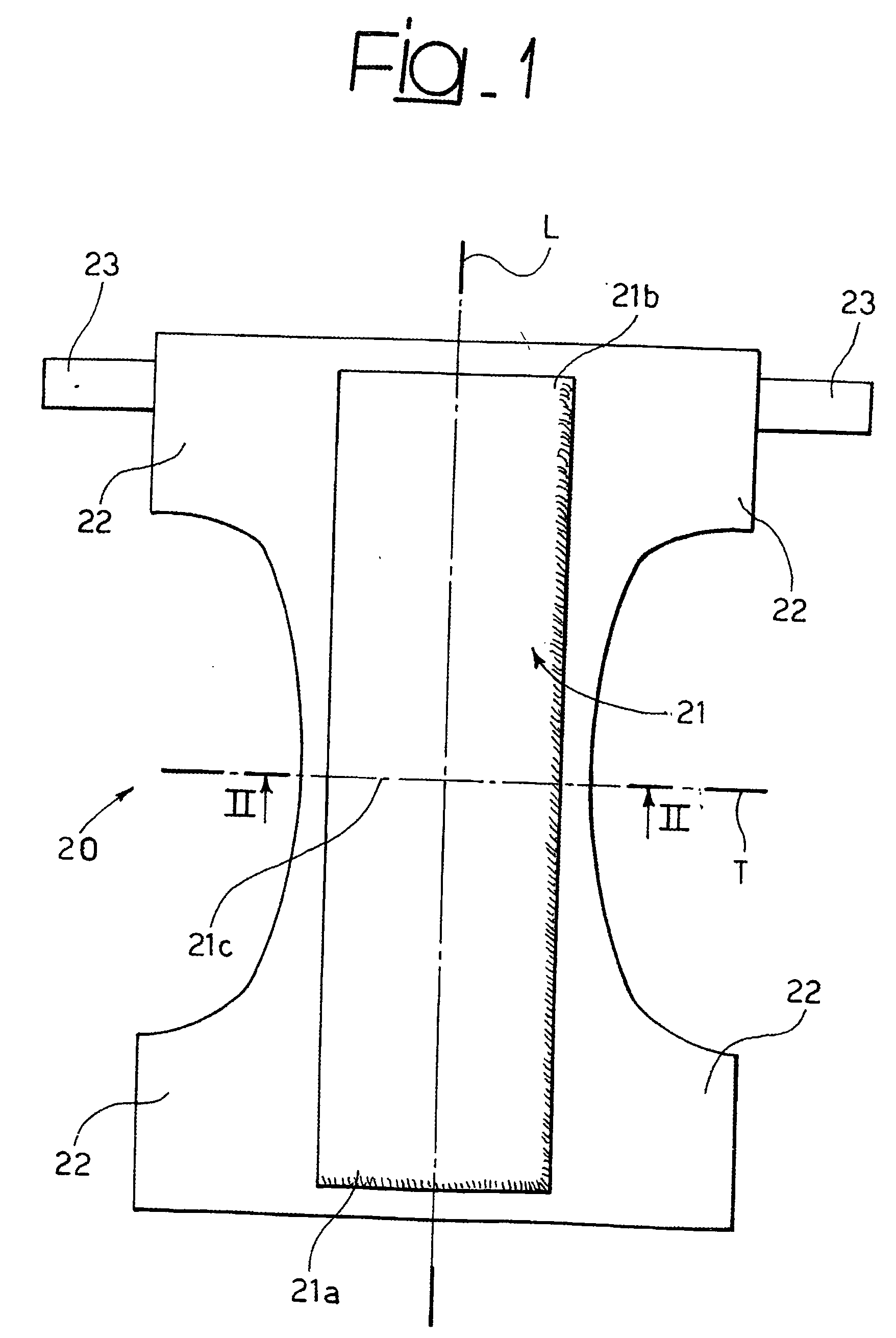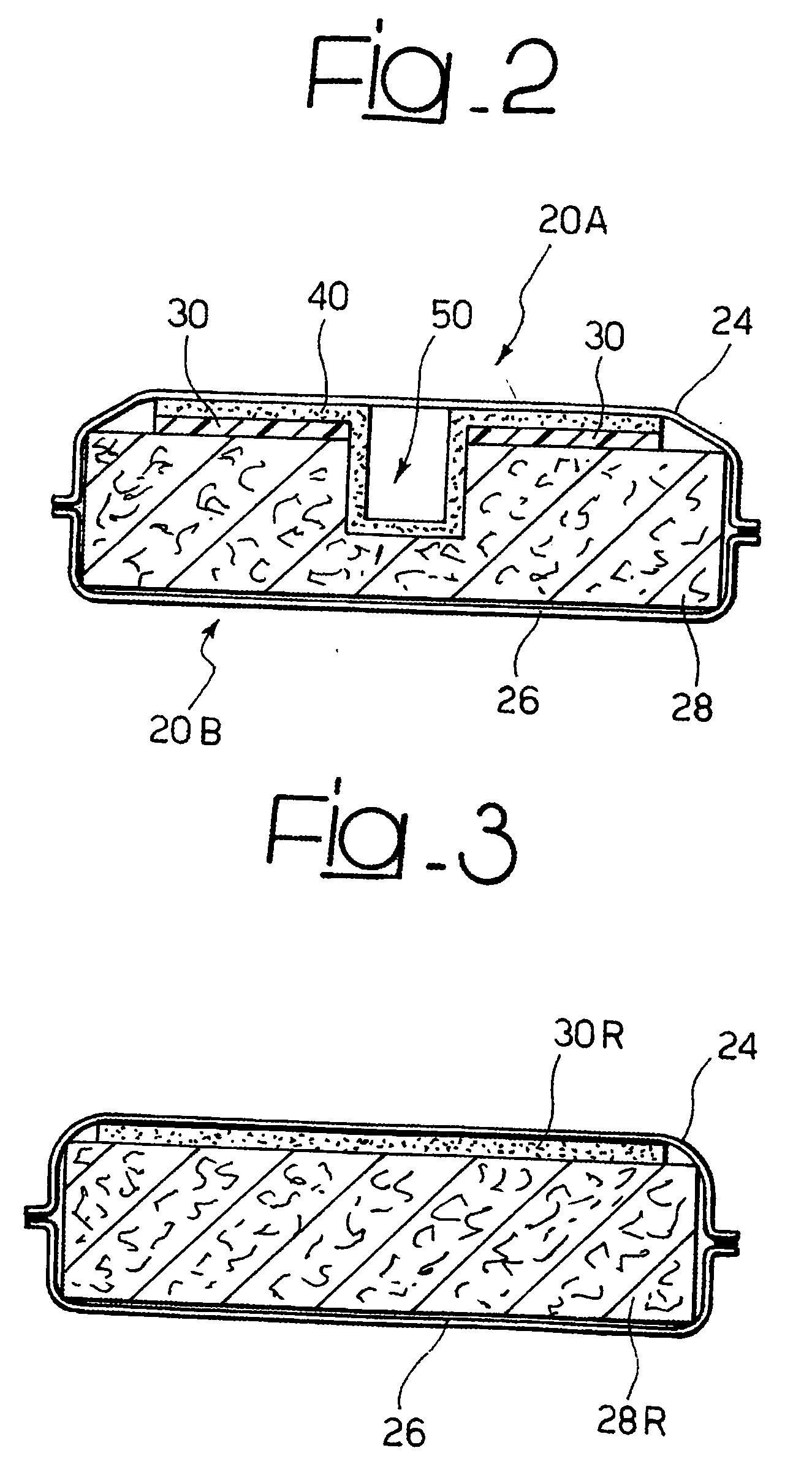Absorbent articles with improved acquisition rate
a technology of absorbent articles and absorbent materials, which is applied in the field of absorbent articles that can be disassembled, can solve the problems of affecting the effectiveness of the absorbent aid in acquiring/diffusing liquid, affecting the ability of the resultant gel layer, and affecting the effectiveness of the absorbent aid
- Summary
- Abstract
- Description
- Claims
- Application Information
AI Technical Summary
Benefits of technology
Problems solved by technology
Method used
Image
Examples
Embodiment Construction
[0037] A preferred embodiment of a disposable absorbent product 20 of the present invention is shown in FIG. 1.
[0038] As shown in FIG. 1, the product 20 is in the form of e.g. a baby diaper or an adult incontinence pad. The product is shown in FIG. 1 in an extended condition, e.g. in preparation for being worn by a wearer.
[0039] It will be appreciated, however, that the same basic principles of the invention described herein are however adapted to be easily applied to other types of disposable absorbent products such as e.g., sanitary napkins.
[0040] In the case of a baby diaper or an adult incontinence pad the product 20 typically comprises an absorbent means (or “main body portion”) 21, and four flaps 22 adding up to a general “hourglass” shape. The product 20 is thus adapted to be worn in a well known manner by placing the main body portion 21 under and around the “crotch” portion of the wearer. The flaps 22 are then extended and connected (via fasteners such as e.g. adhesive t...
PUM
| Property | Measurement | Unit |
|---|---|---|
| width | aaaaa | aaaaa |
| particle size | aaaaa | aaaaa |
| thickness | aaaaa | aaaaa |
Abstract
Description
Claims
Application Information
 Login to View More
Login to View More - R&D
- Intellectual Property
- Life Sciences
- Materials
- Tech Scout
- Unparalleled Data Quality
- Higher Quality Content
- 60% Fewer Hallucinations
Browse by: Latest US Patents, China's latest patents, Technical Efficacy Thesaurus, Application Domain, Technology Topic, Popular Technical Reports.
© 2025 PatSnap. All rights reserved.Legal|Privacy policy|Modern Slavery Act Transparency Statement|Sitemap|About US| Contact US: help@patsnap.com



